Hubspot
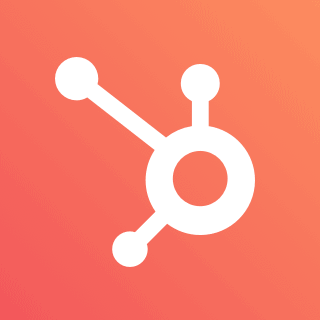
- All-in-one CRM platform
- Inbound marketing automation
- Sales pipeline management
- Reporting and analytics tools
- Email marketing workflows
Looker

- Data visualization
- Customizable dashboards
- SQL-based data queries
- Real-time data insights
- Cloud-based analytics platform
Act-On

- Marketing automation
- Lead nurturing and scoring
- Email campaign management
- Landing page builder
- Analytics and reporting tools
Are you looking for the best Supermetrics alternatives? As a data-driven marketer, you understand the challenge of consolidating metrics from dozens of platforms.
Supermetrics is a leader in solving this problem, acting as a powerful data connector that pipes information from your marketing tools directly into your reporting destinations.
However, Supermetrics isn’t the only solution, and it might not be the perfect fit for everyone.
Some businesses may find better value in an all-in-one platform that reduces the need for a connector. In contrast, others might need a more specialized tool for agency reporting or enterprise-level analytics.
This guide explores 5 excellent alternatives to Supermetrics. We will clarify what each tool does best and for whom, so you can make an informed decision.
What Does Supermetrics Do?
Supermetrics provides users with a comprehensive view of their business analytics. It offers its services in various formats, including:
- Supermetrics for Google Sheets
- Supermetrics for Data Studio
- Supermetrics for Excel
- Supermetrics for BigQuery
As Supermetrics delivers clear insights into business analytics, it is widely utilized by companies for marketing purposes.
Quick Look: The Best Supermetrics Alternatives in 2026
| Tool | Type of Tool | Best For | Key Advantage vs. Supermetrics |
| HubSpot Marketing Hub | All-in-One CRM Platform | Businesses wanting a single integrated platform for marketing, sales, and analytics. | Reduces the need for a connector by centralizing marketing activities and data natively. |
| Looker | Business Intelligence (BI) | Data teams who need to build advanced, interactive data dashboards and perform deep analysis. | Far more powerful for data visualization and exploration (often used with Supermetrics). |
| Act-On | Marketing Automation Platform | Mid-sized businesses focused on lead generation, nurturing, and email marketing. | Provides integrated reporting specifically for its own marketing automation activities. |
| Adobe Analytics | Enterprise Web Analytics | Large enterprises needing granular analysis of on-site customer behavior and journeys. | Unparalleled depth in user segmentation and flow analysis within its own ecosystem. |
| ReportGarden | Agency Reporting Tool | Digital marketing agencies that need to automate the entire client reporting workflow. | Combines data connection with proposal, budget, and client management tools. |
List of The 5+ Best Supermetrics Alternatives 2026
1) Hubspot Marketing Hub
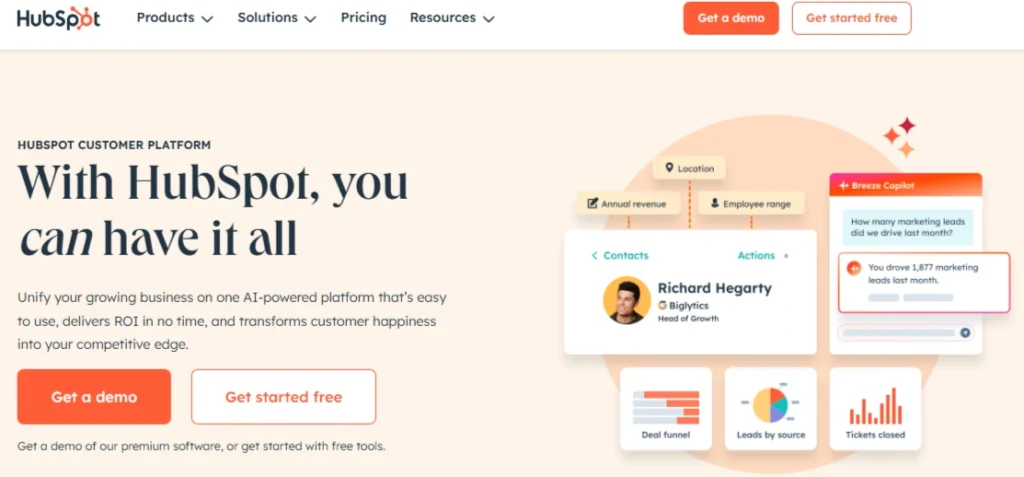
HubSpot is not a like-for-like Supermetrics alternative. Instead, it’s an all-in-one platform that can reduce or eliminate the need for a separate data connector.
It achieves this by aiming to be the source of your data. HubSpot includes tools for email marketing, social media, blogging, landing pages, and ad management.
Because all this activity happens within one ecosystem, its built-in reporting is powerful and deeply integrated.
Hubspot and Supermetrics:
- Function: HubSpot is a complete marketing suite; Supermetrics is a specialized data integration tool.
- Use Case: Choose HubSpot if you want to manage your marketing and reporting in one place. Choose Supermetrics if you use a diverse set of marketing tools and need to consolidate their data elsewhere.
- Data Control: HubSpot’s analytics are best viewed within its own dashboards. Supermetrics is built to send data to any destination you choose (Sheets, BigQuery, etc.).
Hubspot: Pros and Cons
Pros:
- All-in-one platform combining CRM, marketing, sales, and analytics tools
- Built-in reporting and dashboards with customizable features
- Advanced data visualization capabilities for tracking campaign performance
- Native integrations with multiple platforms like Google Analytics and social media tools
- User-friendly interface with intuitive drag-and-drop features for report building
Cons:
- It would have been a better option if HubSpot had shown how visitors interact with the website.
- If the traffic reports had segments like the visitor’s origin and the operating system the visitor uses, then this could have been an added point.
2) Looker
Looker is a premier data visualization and business intelligence platform, now part of Google Cloud. It’s crucial to understand that Looker is not a data connector; it is a data destination and analysis tool.
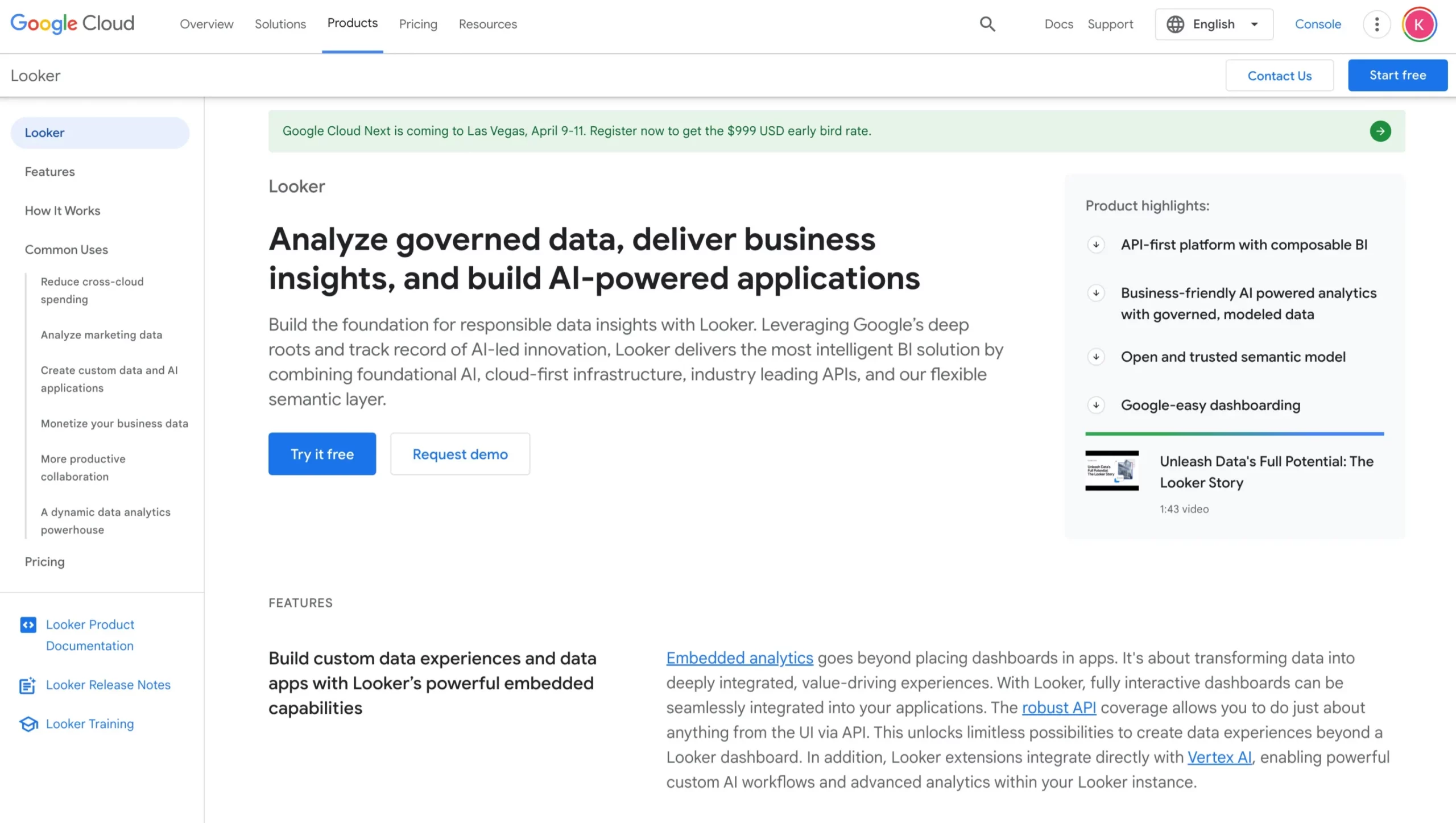
It represents an alternative to the end result of using Supermetrics (like a dashboard in Google Sheets or Looker Studio), not the data connection process itself.
In fact, many companies use Supermetrics specifically to feed data into Looker for advanced analysis.
Looker and Supermetrics:
- Function: Looker turns raw data into beautiful, interactive reports. Supermetrics gets the raw data to the tool.
- Use Case: You would choose Looker for its advanced dashboarding and data exploration features, which are far more powerful than what you can build in Google Sheets.
- Synergy: Many advanced teams use both: Supermetrics to pull and blend data, and Looker to visualize it.
Looker: Pros and Cons
Pros
- Customizing the visualizations gets a bit hard with Looker
- Confusing security groups and restrictions
- With large queries, the speed might slow down
- A bit tricky to get started
Cons:
- Proper ordering of the content available in the report
- Reports can be saved and used for future needs
- Ability to customize the dashboard
3) Act-On
Act-On is a marketing automation platform designed to help businesses manage lead nurturing, email campaigns, and landing pages.
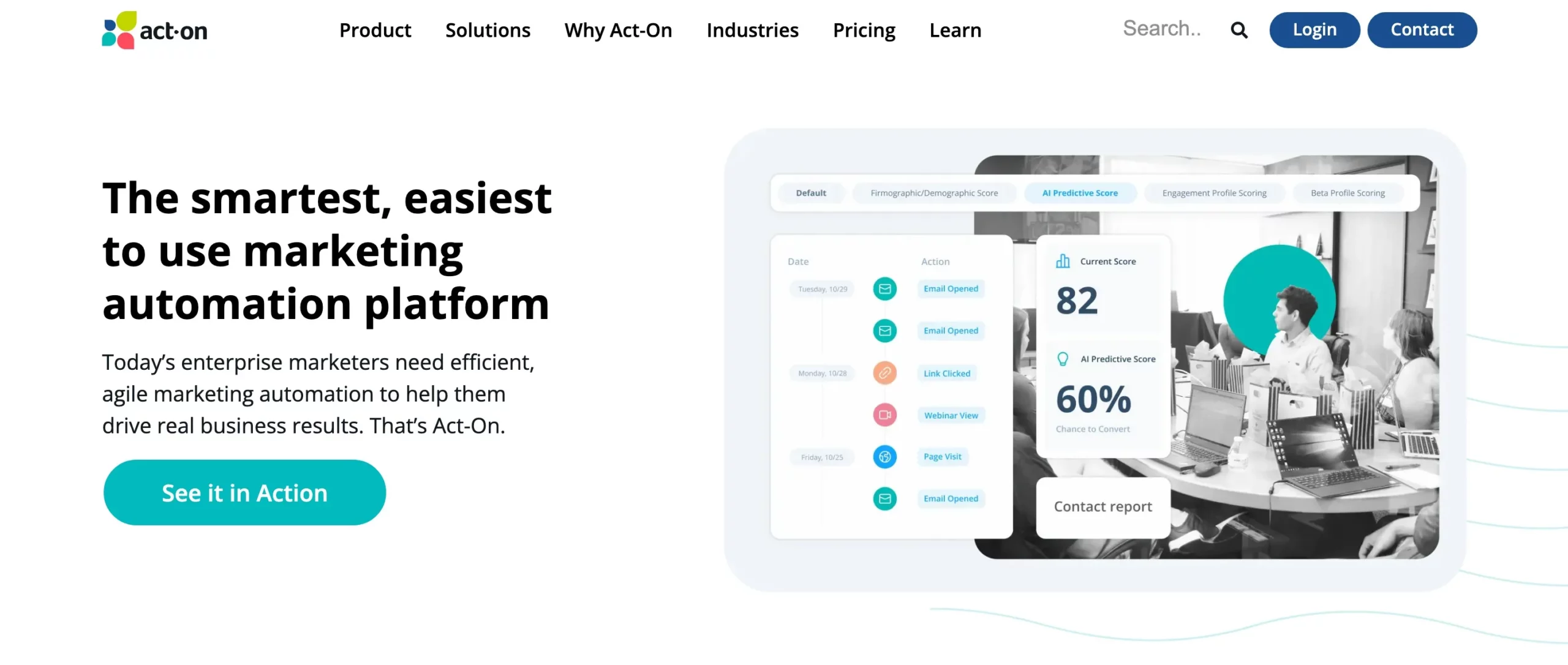
Similar to HubSpot (but often geared toward the mid-market), Act-On’s value as an alternative comes from its integrated nature. It provides built-in analytics for all the activities you perform within its platform.
If your primary reporting needs revolve around email performance, lead scoring, and landing page conversions, Act-On’s native reporting might be sufficient.
Act-on and Supermetrics:
- Function: Act-On is a tool for executing and managing marketing campaigns. Supermetrics is for reporting on them.
- Data Scope: Act-On excels at reporting on its own activities (email opens, form fills). Supermetrics can pull this data plus data from your ad platforms, social media, and more into one view.
- Use Case: Act-On is a potential alternative for teams whose main goal is lead generation and nurturing, and who are satisfied with keeping that reporting inside the Act-On platform.
Act-on: Pros and Cons
Pros:
- Strong focus on lead nurturing, scoring, and segmentation.
- Easy CRM integration to track leads through the sales funnel.
- Good customer service and responsiveness to user feedback.
Cons:
- Reporting is limited to data generated within Act-On.
- Lacks the broad data source connections of Supermetrics.
4) Adobe Analytics
Adobe Analytics is an enterprise-level analytics powerhouse designed for deep, granular analysis of customer journeys. It provides a comprehensive view of how users interact with your digital properties.
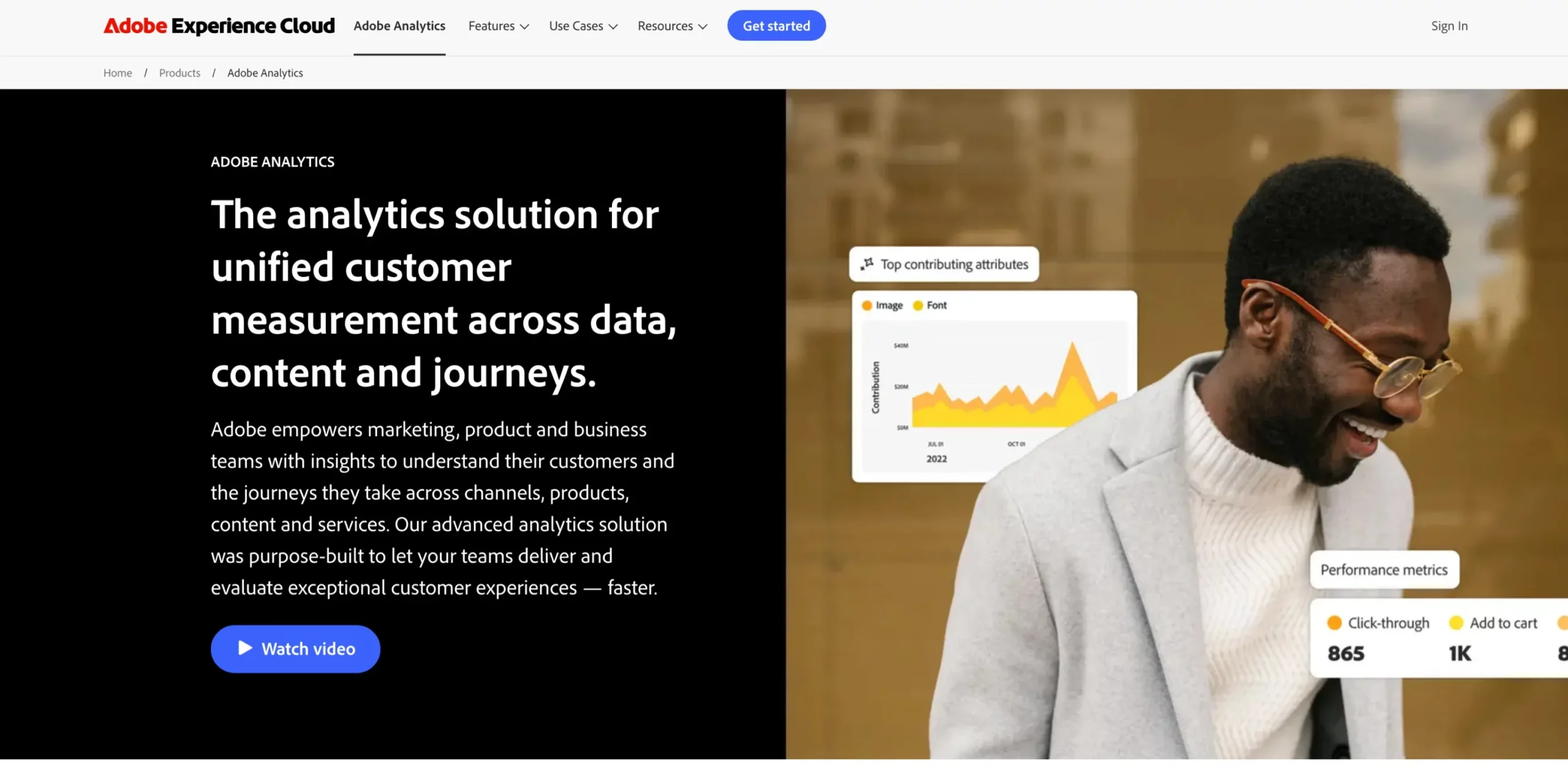
For large organizations, it can serve as a Supermetrics alternative by becoming the central, authoritative “source of truth” for behavioral and marketing data, reducing the need to export and blend data elsewhere.
Adobe Analytics and Supermetics:
- Function: Adobe Analytics is a specialized platform for deep user analysis. Supermetrics is a tool for data transport.
- Scale & Complexity: Adobe is built for large enterprises with dedicated analyst teams and complex measurement needs.
- Analysis Power: Its ability to perform real-time segmentation and flow analysis on massive datasets is far beyond what Supermetrics is designed for.
Adobe Analytics: Pros and Cons
Pros:
- The ability to customize the report in a comfortable user interface is an added point for Adobe Analytics.
- The inbuilt workspace in Adobe Analytics makes the drag-and-drop custom visualization a bit easier to work with.
- Powerful segmentation and flow analysis add up to big points when choosing Adobe Analytics.
Cons:
- Very expensive, often with significant implementation and maintenance costs.
- Not beginner-friendly and requires specialized training to use effectively.
5) Reportgarden
ReportGarden is a reporting and dashboard tool built specifically for the needs of digital marketing agencies.

It understands that agencies need more than just data—they need to create proposals, manage client budgets, and produce beautiful, white-labeled reports efficiently.
It bundles data connection capabilities with a suite of tools designed to streamline the entire agency workflow, making it a strong Supermetrics alternative for this specific audience.
Reportgarden and Supermetrics:
- Audience: ReportGarden is laser-focused on agencies. Supermetrics is a general-purpose tool for any marketer or analyst.
- Features: ReportGarden includes agency-specific features like client portals, budget tracking, and proposal templates that Supermetrics lacks.
- Function: It is a complete client reporting solution, not just a data connector.
Reportgarden: Pros and Cons
Pros:
- Simple and sophisticated user interface designed for agency workflows.
- Excellent templates for creating professional client-facing reports.
- Combines reporting, budgeting, SEO auditing, and client management in one platform.
- 14 days of a free trial to know whether the user needs the tool or not
Cons:
- Less flexible for in-house marketing teams who don’t need the agency features.
- The number of direct data integrations may be fewer than a dedicated tool like Supermetrics.
What’s the Importance Of Business Analytics in Your Business?
1) What is Business Analytics?
Business analytics is a commercial term. Many businesspeople use it to track their business growth. With the knowledge accumulated through business analytics, entrepreneurs can modify their work strategies.
Business people depend on this kind of tool to increase their productivity.
2) What can Analytics do for Business?
Analytics show the business people how their work is growing. The analytical data shows clear data about their business, like
- From where are they getting visitors
- People from which country are coming as visitors to their website
- With what source are the visitors reaching out to the page
- Which page do the visitors find interactive
- What OS-using people are viewing their page
Like this, analytics provides a number of data points about the business to business people.
3) How Do the Analytical Reports Help Business People?
The analytical data provided by the reports shows where the business is reaching its peak and where more concentration is needed.
As the businessperson has implemented a new strategy for his website, he needs to know how well the article is progressing.
In this case, the businessperson might opt for the analytics reports. The analytics reports clearly show which part of his website is driving growth and which part is not yielding significant changes to the business.
4) When is the Right Time to Deploy the Analytics Strategy?
There is no specific time to deploy analytics strategies. You can do it whenever you want, as you need. Some websites, like blogger.com, provide us with the analytics tool for free. Therefore, there is no better time than this to start.
5) Which Analytics Tool Should I Use?
Again, this one also depends on your interests and requirements. As discussed above, numerous analytics tools are available. You can choose your tool based on your needs and the amount you are willing to invest.
6) Is There Any Difference in Every Analytics Tool?
Yes, there are many differences between each analytics tool. Some provide reports in the form of a pie chart or bar chart, while some might provide reports in the form of Excel sheets.
Some businesspeople might also need to modify the reports. In that case, the tool must be flexible. Some individuals may need to establish a business goal that requires regular monitoring in their daily work. In this case, you might need an analytics tool of your choice.
Based on your needs, requirements, and investments, you can select the business analytics tool that best suits your needs.
7) How Much Resource is Required?
Again, this one, too, meets your requirements. Several factors determine the number of resources you need. Factors like,
- You traffic flow
- Features you have implemented
- Analysis tool
Play a vital role in the number of resources needed.
8) How Much Does Data Analytics Cost?
Data analytics costs depend on the kind of software the organization uses. There are software like SASS and SPSS, as well as some tools that use different languages like Python, JavaScript, etc.
The cost of data analytics is decided based on the resources used to develop the tool and its features.
Quick Links:
- Wishpond vs Hubspot
- Best RedTrack Alternatives
- Madgicx vs Supermetrics vs Calldrip vs 4C
- Klipfolio vs Supermetric vs Tableau
FAQs About Supermetrics Alternative
1. What's the difference between a data connector and an all-in-one platform?
A data connector (like Supermetrics) is a bridge that moves data from multiple sources into one report. An all-in-one platform (like HubSpot) is the source, offering its own marketing and reporting tools so you don’t need a separate connector.
2. Why do people look for Supermetrics alternatives?
The main reasons are cost (it can get expensive with many connectors), a need for specific features (like marketing attribution or agency tools), or a desire for a simpler, all-in-one solution.
3. Can I use Supermetrics with some of these alternatives?
Yes. It’s common to use Supermetrics to pull data into a powerful BI tool like Looker. Supermetrics acts as the bridge for data, while Looker creates the final dashboard. They work together as a team.
4. Where does the free Looker Studio fit in?
Looker Studio (formerly Google Data Studio) is a free data visualization tool. It’s a great destination for your data, but you still need a connector like Supermetrics to pull in data from non-Google sources like Facebook or LinkedIn Ads.
5. I'm on a small budget. What should I use?
Start by using the free, built-in analytics within each platform (like Facebook Ads Manager). When you need to combine data, use a free tool like Looker Studio with its native Google connectors. Only pay for a data connector when you find yourself wasting too much time manually downloading and combining CSV files.
Conclusion: Top 5 Supermetrics Alternatives in 2026
Choosing the right tool depends on understanding your core problem. Don’t think of these platforms as direct replacements for each other, but as different solutions to different challenges.
- Choose HubSpot or Act-On to simplify your tech stack and centralize marketing and reporting in one platform.
- Choose ReportGarden if you run a marketing agency and need an all-in-one solution for client reporting and management.
- Choose Adobe Analytics if you are an enterprise organization needing the most powerful customer journey analysis tool on the market.
- Choose Looker when your primary need is advanced, interactive data visualization (and be prepared to feed it data).
By identifying your primary need—be it integrated marketing, agency reporting, or deep analysis—you can choose a platform that provides far more value than a simple data connector alone.
